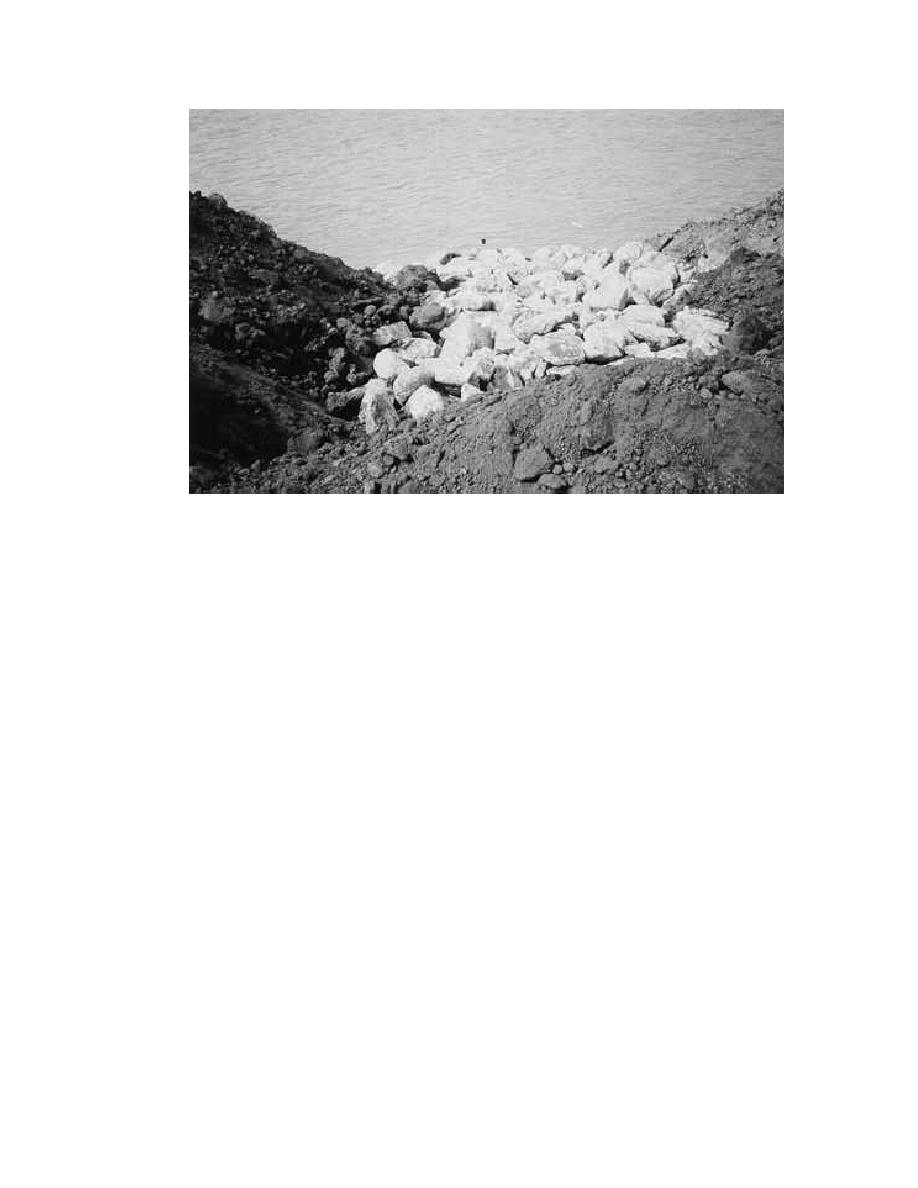
|
|

|
||
 Appendix B: Bioengineering for Streambank Erosion Control -- Guidelines
Figure 4. Rock refusal used on an upper Missouri River bioengineering
project. Note that it is keyed back into the bank to prevent
flanking of the upper and lower end sections of the project.
Bioengineering by Zones
Plants should be positioned in various elevational zones of the bank based on their ability
to tolerate certain frequencies and durations of flooding and their attibutes of dissipating
current- and wave-energies. Likewise, bioengineering fixes should be arranged by zone,
which will be discussed below. The zone definitions given below correspond to those used
by the U.S. Army Corps of Engineers, Omaha District, and have been used in preparing
guidelines for the use of vegetation in streambank erosion control of the upper Missouri River
(Logan et al. 1979). These zones are not precise and distinct since stream levels vary daily
and seasonally--they are only relative and may be visualized as somewhat elastic depending
on the bank geometry. If one carefully copied nature in the planning process, plant species
can be chosen that will adapt to that specific zone or micro-habitat. Mallik and Rasid (1993)
lend credence to this zonal concept in a study on the Neebing-McIntyre Floodway, parts of
the Neebing and McIntyre River Complex near the Intercity area of Thunder Bay, Ontario,
Canada. They describe four micro-habitats: bank slope, scarp face, above-water bench, and
under-water depositional shelf. Each one had distinctively dominant plant species that
generally correspond to the types of plants adapted for this report. Figure 5 illustrates the
location of each bank zone for the upper Missouri River example. A description of each and
the types of vegetation and appropriate species examples associated with them is given
below. This zonal concept can be expanded to other streams to
B-17
|
||
 |
||